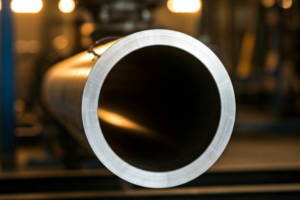Key Highlights
2024 aluminum alloy is known for being light and strong. This makes it great for tough work in the aerospace and automotive industries.
Adding copper helps to increase its strength and makes it better at resisting fatigue. This means it can handle high-stress and repeated loads.
For the best performance of 2024 aluminum alloy, a special heating process is used during extrusion. This includes solution heat treatment and artificial aging.
It’s important to understand different tempers, like T3, T4, and T6. This helps in choosing the right 2024 aluminum alloy based on strength and how easily it can be shaped.
While 2024 aluminum alloy is good for machines, it can crack when stress is caused by corrosion. Therefore, protective coatings should be used in difficult conditions.
Introduction
The 2024 aluminum alloy stands out because it is very strong. It is well-known for its great mix of mechanical properties. Many industries like this aluminum alloy because it is lightweight but still strong. This advantage is important in fields such as aerospace and automotive. The extrusion process helps to shape the 2024 aluminum alloy into different forms while keeping it strong and light. This opens up many opportunities for engineers and manufacturers in various areas.
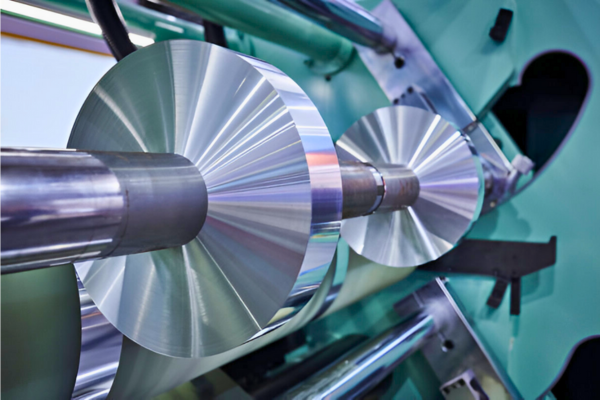
Exploring the 2024 Aluminum Alloy
Aluminum alloys are very helpful. One of the best types is 2024 aluminum. Many people choose it because it is strong, resists wear, and is simple to work with. This makes it great for tasks that need strong materials under stress. We can find 2024 aluminum in several products like airplanes and durable car parts.
One big reason it is popular is the mix of alloying elements, especially copper. This main element improves its mechanical properties. Because of this mix, we can make strong parts, that last a long time and are lightweight. This quality is very important in industries that care about weight.
Defining 2024 Aluminum Alloy and Its Unique Qualities
The 2024 aluminum alloy is special because of its unique mix. It is made up of more than 90% aluminum. The main added element is copper, along with magnesium and manganese. This combination makes the alloy very strong. It also has good fatigue resistance. This means it can handle repeated stress without breaking down.
The 2024 aluminum alloy is very strong. It can support heavy loads better than many other aluminum alloys. This strength makes it a great choice for structural applications that need strong structural integrity. Some examples include parts like aircraft wings, fuselages, and other important components.
Its strong fatigue resistance is vital in areas where parts face regular vibrations and pressure. In the automotive industry, this alloy is a good choice for suspension systems and wheels. It helps to keep them dependable for a long time. GET A QUOTE
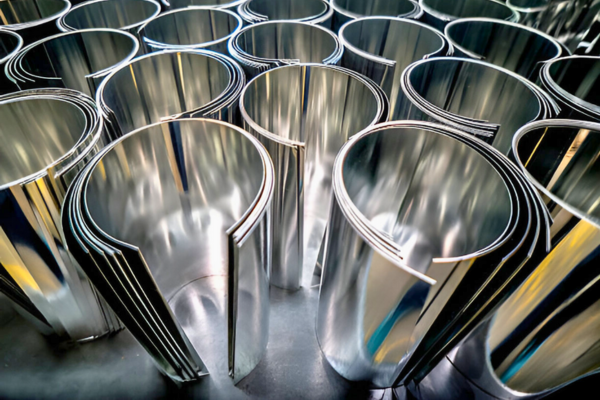
The Composition and Significance of 2024 Aluminum Alloy
The chemical makeup of 2024 aluminum alloy is essential for its strength. Copper is the primary alloying element. It boosts the material’s tensile strength and yield strength. Adding magnesium helps the alloy keep its shape and avoid lasting bends when under stress. This property makes it ideal for structural components that must hold their form when they are loaded.
Manganese is a key element. It makes the alloy stronger and easier to handle. A few small amounts of other elements, like silicon and iron, are added as well. This is done carefully to maintain the alloy’s good features.
For manufacturers, it is key to understand how alloying elements interact. This knowledge influences heat treatment processes and shapes the properties of the 2024 aluminum alloy. Knowing this allows changes to be made to the material’s features. This helps meet the needs of different industrial applications.
2024 aluminum alloy extrusion process
The aluminum extrusion process is very important in manufacturing today. It helps make complex shapes that have the same width throughout. This method works well with the 2024 aluminum alloy. This alloy is easy to shape and remains strong, even when made into challenging designs.
In this process, a heated aluminum billet goes through a die that has a specific shape. This changes the billet into a long piece in that shape. The process can be adjusted to make solid or hollow shapes. Because of this, it is useful in many different industrial applications.
Preparing Aluminum for Extrusion: From Billet to Die
The aluminum extrusion process starts with an aluminum billet. This billet is a round piece made from 2024 aluminum alloy. First, the billet is shaped to the right size. Next, it is heated to about 800-900 degrees Fahrenheit. This heating readies the billet for the following step in the extrusion process.
Once the billet is soft, it goes to the extrusion press. Here, it enters a container. The press has a hydraulic ram and a die. The die is a strong tool made of tough steel. It shapes the final product to the desired profile. As the aluminum is pushed through, it takes on this shape under high pressure.
During the extrusion process, the soft aluminum moves like a thick liquid. It takes the shape of the die and comes out as a long piece. This way is efficient and precise. It works well for making many different shapes that are all the same size. GET A QUOTE
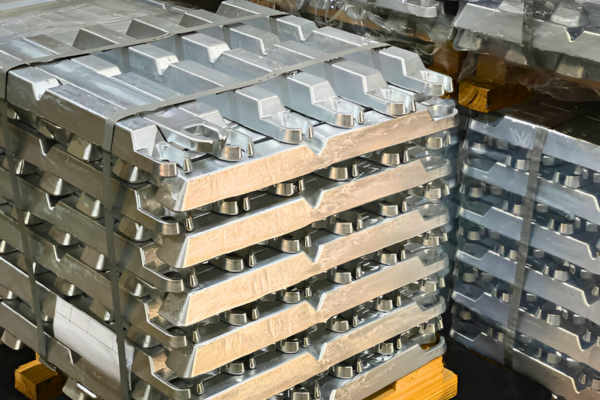
Detailed Steps in the Extrusion of 2024 Aluminum Alloy
The extrusion process for 2024 aluminum alloy includes two main types: direct extrusion and indirect extrusion. Each method has its advantages. The method we choose will depend on the shape we want to make and how detailed the final product needs to be.
Direct Extrusion: In this process, the material gets pushed through a shape maker known as a die. The die does not move. A lot of force is needed to overcome the friction between the material and the die’s wall. This method is often used to create simple shapes and solid items.
Indirect Extrusion: In this method, the die is pushed toward the still material. This reduces friction, making it easier to create more complex shapes and hollow items with better accuracy.
| Feature | Direct Extrusion | Indirect Extrusion |
| Billet Movement | Stationary | Stationary |
| Die Movement | Moving | Stationary |
| Friction | Higher | Lower |
| Complexity | Simpler shapes | More complex |
The extrusion process requires close attention. We need to control the temperature, speed, and pressure. This is key to producing a stable and high-quality product, regardless of the method we choose.
Optimizing the Properties of 2024 Aluminum Alloy through Heat Treatment
Heat treatment is important for getting the best results from the 2024 aluminum alloy. When manufacturers carefully control the heating and cooling steps, they can change the mechanical properties of the alloy. This enhancement makes the alloy stronger, and harder and improves its overall performance.
The heat treatment process has several key steps. First, there is solution heat treatment. Next is quenching, followed by aging. Each of these steps alters the microstructure of the aluminum alloy. These changes are vital for getting the right properties. It’s important to understand how different heat treatments affect the properties of the alloy. This knowledge helps adjust the properties of the 2024 aluminum alloy for specific needs. GET A QUOTE
Overview of Heat Treatment Phases for 2024 Aluminum Alloy
The heat treatment for the 2024 aluminum alloy starts with solution treatment. First, they heat the alloy to about 930°F (500°C). This helps to mix the alloying elements, especially copper, into the aluminum. Because of this, a uniform solid solution forms in the material.
After heat treatment, the alloy cools down quickly in a process called quenching. This step is very important. It “locks” the alloying elements in their dissolved state. It also helps prevent large particles from forming, which can weaken the material. Quenching usually involves putting the hot alloy in cold water or a polymer solution.
The last step of heat treatment is called artificial aging. In this step, the alloy that was cooled fast gets heated again. This time, it happens at a lower temperature, usually between 300-400°F (150-200°C), for a specific time. This careful heating creates tiny particles in the aluminum. These particles help to make the alloy stronger, harder, and more resistant to fatigue, just like natural aging does.
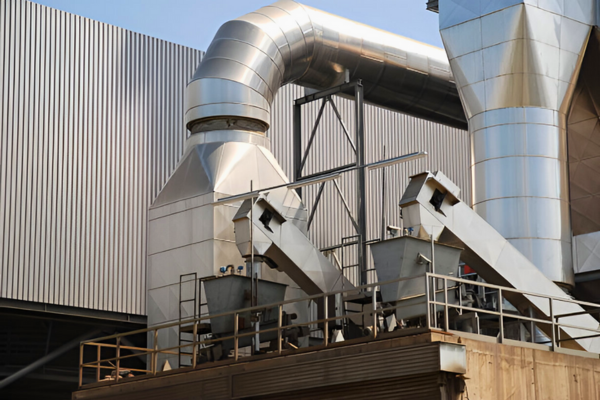
Techniques and Benefits of Quenching and Aging
Quenching is an important part of heat treatment. It cools the heat-treated 2024 aluminum alloy quickly. This usually means putting the alloy in water or special liquids called polymer quenchants. Fast cooling stops big and bad compounds from forming in the material. This process helps make the alloy stronger, more flexible, and tougher.
After the quenching process, aging improves the alloy further. During aging, tiny pieces of copper-aluminum compounds, like Al2Cu, form inside the aluminum. These pieces make the alloy stronger by preventing movements that could cause damage under stress. As a result, the hardness, tensile strength, and yield strength of the alloy increase a lot.
Even when using heat treatment methods like quenching and aging, the thermal conductivity of the 2024 aluminum alloy does not change much. This quality is natural for aluminum. Because of this, the aluminum alloy is excellent for tasks that need to remove heat effectively. It is ideal for products like heat sinks and engine parts.
Fabrication Techniques and Post-Processing Methods
Once the 2024 aluminum alloy is formed and heated, it has several steps to become the final product. These steps are cutting, welding, and surface treatments. They all help improve quality and make sure the part functions properly.
Machining tasks involve cutting, drilling, and milling. These processes help form shapes and achieve tight assembly tolerances. If welding is necessary, it must be done carefully. The alloy can crack easily, so we may need special techniques and materials. GET A QUOTE
Machining, Welding, and Joining 2024 Aluminum Alloy
2024 aluminum alloy is about average for machining when we compare it to other aluminum alloys. We can work with it using regular methods, but we need to pay attention to cutting speeds, feed rates, and the tools we use. For precise jobs, many people prefer using CNC milling and turning. These methods help in creating detailed shapes and achieving the tight tolerances that are essential for important parts in the aerospace and automotive industries.
Welding 2024 aluminum alloy can be hard. It can break in the heat-affected zone while welding. Using methods like Gas Tungsten Arc Welding (GTAW) with the right filler materials might solve this problem. However, many people choose other ways to join the metal. They often use riveting, adhesives, or mechanical fasteners. These methods help keep the structural integrity of the metal strong.
If we want to weld, begin by preheating the material. Use methods that apply low heat during the process. A good joint design is important to lower the chance of cracks. After we finish welding, apply heat treatments. These can help to ease any stress that is left.
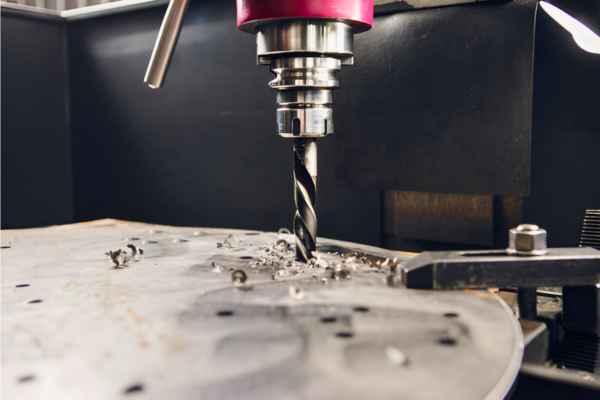
Surface Finishing Techniques for Enhanced Performance
To make the 2024 aluminum alloy better at working and lasting longer, it goes through several surface finishing steps. These treatments help in two main ways. First, they give the alloy a smoother surface finish. Second, they make the material stronger against corrosion. This is important because aluminum can corrode easily, especially in tough conditions.
Anodizing is a common method used to treat surfaces. It adds a special oxide layer to aluminum. This layer makes aluminum stronger and helps it resist damage. It also protects aluminum from rust. There are different types of anodizing. Chromic acid anodizing, also known as Type I, and sulfuric acid anodizing, or Type II, are two examples. These types are used depending on what qualities are needed for the aluminum.
Powder coating is an excellent way to protect aluminum. It provides a strong, attractive finish. This method uses a dry powder that sticks to the aluminum surface with electricity. After that, it is heated to form a smooth and hard finish. This finish is great because it resists chipping, fading, and scratching, making it very durable.
Key Applications and Industries Relying on 2024 Aluminum Alloy Extrusions
The 2024 aluminum alloy extrusions are made with a unique blend that gives them high strength, lightweight, and fatigue resistance. This makes them very helpful in various industries. They are key for making aircraft and producing detailed car parts. The uses for this flexible alloy are expanding continuously.
Its strength and ability to create complex shapes make it a popular choice for engineers. They want to boost performance while reducing weight. Now, let’s look at some key industries where aluminum alloy extrusions of 2024 are important. GET A QUOTE
Aerospace Applications: From Commercial to Defense
The aerospace industry depends on 2024 aluminum alloy extrusions. This alloy is great for work that needs both high strength and low weight. It can handle a lot of stress during flights and has good fatigue resistance. Because of these features, many choose this alloy for structural parts in commercial and military aircraft. Here are some important uses:
Fuselage Structures: The fuselage is made of 2024 aluminum alloy extrusions. This includes parts like skin panels, frames, and stringers. They are strong and stiff. At the same time, they help keep the weight low.
Wing Components: Wings face a lot of stress during flights. That is why 2024 aluminum alloy is good for wing spars, ribs, and skin panels.
Landing Gear Components: The strength and durability of the 2024 aluminum alloy make it perfect for landing gear parts. This includes struts and braces that can handle strong impacts well.

Automotive and Transportation: Driving Innovation
In the automotive industry, it’s important to make vehicles lighter. A lighter vehicle helps improve fuel efficiency and performance. For 2024, aluminum alloy extrusions are often used. They are strong and light. They also have good fatigue resistance. This makes them a great choice for creating lightweight structural parts.
The car industry uses 2024-T4 aluminum. This aluminum is strong, safe from wear, and easy to mold. Here are some common uses:
Body Panels: The body panels use 2024 aluminum sheets. These sheets are lighter than steel but still very strong.
Chassis Components: The high strength of aluminum is perfect for parts like cross members and suspension control arms. This makes the vehicle handle better.
Wheel Rims: They make lightweight and stylish wheel rims from 2024 aluminum alloy. This boosts the vehicle’s performance.
This alloy has a medium coefficient of thermal expansion. This means it does not change much in size or shape when the temperature rises or falls. This feature is important for parts that get hot, like engine components.
Conclusion
In conclusion, it is important to understand 2024 aluminum alloy extrusion and its different alloys. This knowledge can enhance its qualities and uses. This guide talked about its unique composition and the heat treatment steps needed. There are many benefits to using 2024 aluminum alloy extrusions. These benefits apply to several industries, including aerospace and automotive. By using the best methods to create and finish these materials, we can get the most out of 2024 aluminum alloy for our needs. If you need to find a reliable aluminum supplier or factory in China, please feel free to contact us at any time.
Frequently Asked Questions
What are the advantages of using 2024 aluminum alloy in extrusion processes?
The 2024 aluminum alloy is strong and flexible, especially after heat treatment. This property makes it ideal for the extrusion process. It flows easily into the die during shaping. As a result, it can create complex shapes that maintain a consistent size and have a good surface finish.
How Does Heat Treatment Affect the Properties of 2024 Aluminum Alloy?
Heat treatment improves the mechanical properties of 2024 aluminum alloy. This process includes techniques like solution heat treatment and artificial aging. When the heat treatment occurs, the alloy becomes stronger. It gains more tensile strength and yield strength. The alloy also gets harder and can resist fatigue better. This allows it to achieve its maximum strength.
Can 2024 Aluminum Alloy be Used in Marine Environments?
The 2024 aluminum alloy does not resist corrosion as well as some other aluminum alloys. However, you can still use it in marine environments if you take the right steps. Choose special temper codes and use protective coatings like anodizing or powder coating. Regular maintenance will also help make its corrosion resistance better in these situations.






